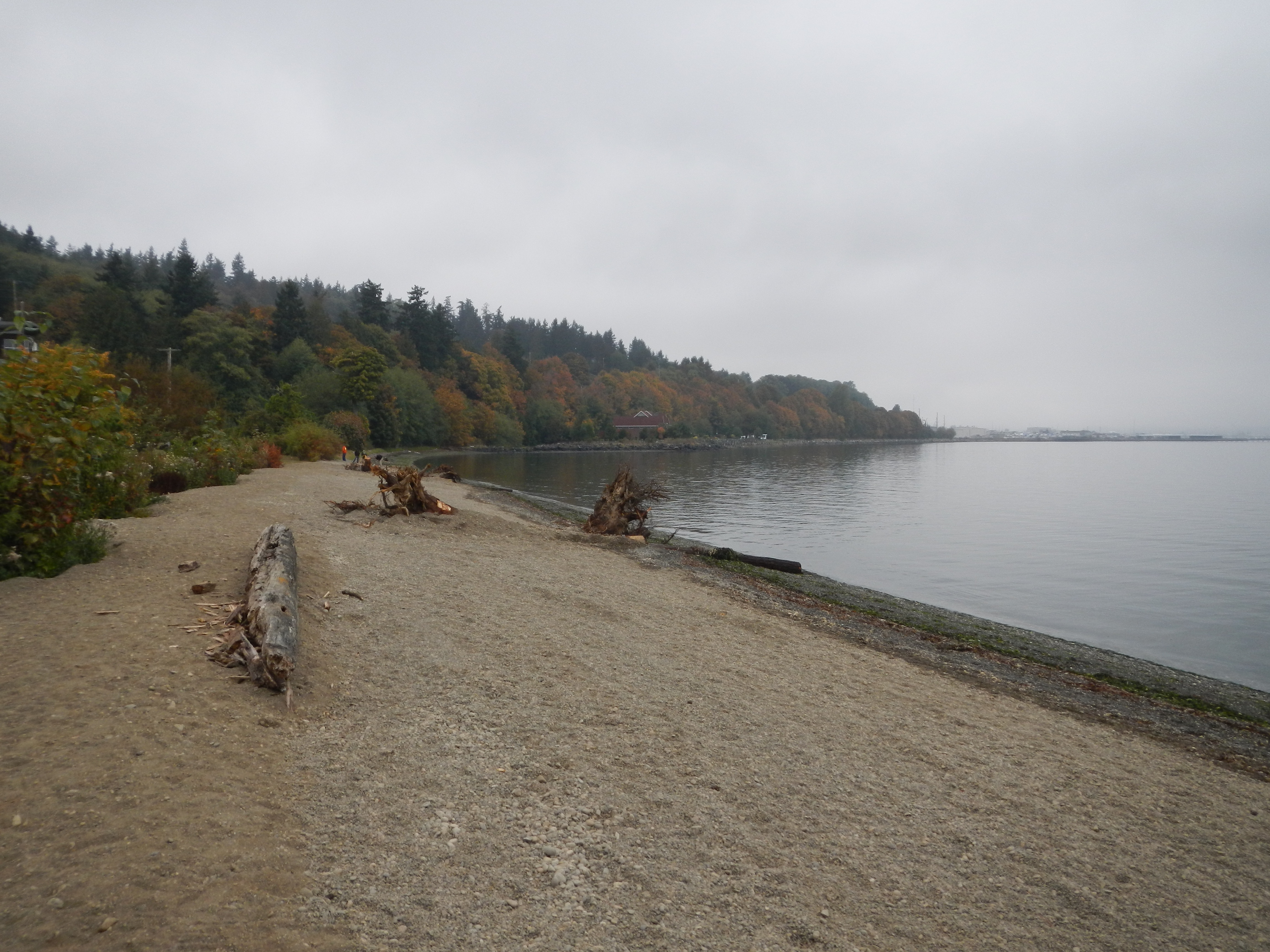Removing bulkheads to create habitat for forage fish
Weaverling Spit is located on Fidalgo Bay, and is traditional homeland of the Samish people. Bulkheads made of concrete, creosote-timber, or rock piles were originally built to protect property, but the bulkhead was failing and causing the beach to erode. The Samish Tribe worked with property owners to remove the bulkhead, grade the beach to a gentle slope, restore the beach with sand and gravel, and anchor logs to keep the beach from eroding. Volunteers from the local high school used wheelbarrows and shovels to move 80 yards of soil, in order to protect areas of cultural significance. In 2014, a winter storm caused property damage on an adjacent section of beach that still had a bulkhead and had not been restored to a natural condition. In contrast, the restored beach did not erode and property was safe. The last section of beach was restored in 2018 and the Samish Tribe’s building that was damaged before restoration was protected during the following winter storms. Small forage fish, an important source of food for salmon and shorebirds, returned immediately to spawn in the restored habitat. Natural wood continues to accumulate on the beach and provides feeding areas for shorebirds.
What worked:
- Removing 1,500 feet of bulkhead created natural beach habitat.
- Grading the beach and adding 1,982 tons of sand and gravel restored the beach and diminished wave energy, which in turn reduced beach erosion.
- Restored beach habitat remained intact after severe winter storms.
- Adding small gravel to the beach attracted forage fish to lay eggs the day after restoration was completed.
- Forage fish eggs survive better on soft shorelines with a gentle gradient than on armored shorelines.
- Using large logs and native plants stabilized the beach sand and prevented flooding on private property.
- Community volunteers manually moved 80 yards of soil to protect cultural resources on Samish land.
Benefits:
- Large logs attract more logs that prevent the sand on the beach from washing away.
- Beach logs captures food for invertebrates which feed fish and birds.
- The restored area protects the tribal building above the beach and enhances cultural use of the site.
Location:
- Congressional District: 2
- Legislative District: 40
- WRIA: 3
- County: Skagit
Partners:
- Samish Indian Nation
- Skagit County Marine Resources Committee
- Cap Sante Alternative High School
- Northwest Straits Initiative
Project Funding:
- Department of Archeology and Historic Preservation
- Northwest Straits Initiative
- EPA National Estuary Program
- Samish Indian Nation
- Shell Refinery
- Port of Anacortes
- City of Anacortes
- Washington Department of Natural Resources
- Puget Sound Partnership

